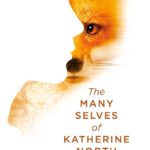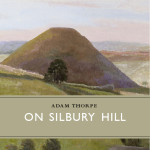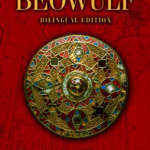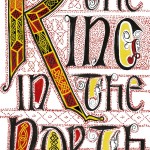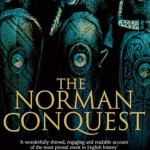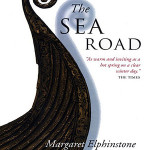With 2016 firmly behind us and January already almost half gone, it’s fair to say that my annual books roundup is long overdue. In this post, I’d like to share with you two of my favourite reads of the year, as well as a handful of other titles to which I’ve awarded honourable mentions.
With 2016 firmly behind us and January already almost half gone, it’s fair to say that my annual books roundup is long overdue. In this post, I’d like to share with you two of my favourite reads of the year, as well as a handful of other titles to which I’ve awarded honourable mentions.
As with my previous end-of-year reviews, I haven’t focussed exclusively on books that came out in the last twelve months, but have instead compiled a mix of older titles and new releases, across a variety of genres.
If you’ve enjoyed any of the titles below or would like to share your own favourite books of 2016, feel free to join in the discussion on Twitter (@JamesAitcheson) or on Facebook. You can also take a look back at my fiction and non-fiction picks of 2015 and 2014.
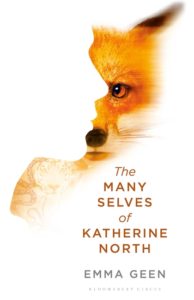 The Many Selves of Katherine North
The Many Selves of Katherine North
Emma Geen
Bloomsbury Circus, 368 pp., £14.99
Hardback
I first came across Emma Geen’s work as long ago as 2012, in ARC, a collection of new writing by the 2010-11 cohort of MA in Creative Writing graduates at Bath Spa University. I was instantly captivated by her accomplished prose, and ever since then I’ve been eagerly looking forward to the publication of her debut novel, which is now out in both the UK and the US.
The eponymous heroine, Katherine (Kit for short), is a phenomenaut: one of a select group of teenagers who project their consciousnesses into lab-grown animal bodies – Ressies – in order to carry out ecological research. At 19 years old, Kit is the most experienced and most valued phenomenaut working for Shen Corporation, but after a traumatic incident in one of her jumps as an urban fox, her psychological condition and her readiness for the job is cast into doubt. Withdrawn from research duty and drafted into Shen’s experimental new consumer-oriented programme, she soon begins to call into question the ethics of her paymasters.
A complex and deftly crafted pscyhological thriller that plays upon many of the tropes of speculative fiction, The Many Selves of Katherine North is a sophisticated exploration of – among other things – the nature of consciousness, the concept of self, the exploitation of our natural environment, and the ethics of child labour. As a phenomenaut, Kit has had to sacrifice much of her adolescence in order to pursue her passion, affecting her physical and her social well-being alike. As the novel progresses and she begins to suspect her role as a pawn in the games of others, she becomes ever more uncertain of her identity and place in the world, not to mention her sanity.
Geen’s prose throughout is taut and considered, and yet retains an earthy, sensual quality entirely in keeping with the novel’s themes, while the flitting between past and present lends a feeling of perennial dislocation that helps communicate Kit’s developing paranoia and fragile mental state. Original and inventive, this is a superlative first novel by a gifted writer: without a doubt one of my favourite books of the year, and one that I’m sure I’ll have great pleasure in re-reading very soon.
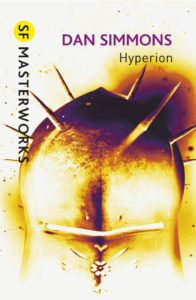 Hyperion
Hyperion
Dan Simmons
Gollancz, 496 pp., £9.99
Paperback
Shortly after I finished working on the final edits for The Harrowing, I stumbled upon this excellent novel – winner of the 1990 Hugo Award for Best Novel and now part of the SF Masterworks collection, published by Gollancz.
Centuries in the future, humanity has colonised the stars, but civilisation in the form of the Hegemony is under threat, both from the machinations of their AI allies within and from invasion by the barbarian Ousters. With war looming, seven pilgrims are selected to travel to the planet Hyperion and to seek out and appeal to the mysterious, dangerous, demigod-like entity known as the Shrike, in the hope that it might come to the Hegemony’s aid. All of them come from different walks of life, with seemingly little in common.
The book can perhaps be most concisely described as The Canterbury Tales in space, made up as it is of several shorter stories, narrated by each of the pilgrims in turn as they pass the time during their long journey. Having recently finished my own multi-viewpoint novel, also inspired in part by Chaucer, I found myself straightaway absorbed by the concept behind Hyperion and eager to see how Simmons managed to weave the many strands of his novel together.
Each thought-provoking tale offers a different perspective on the culture and history of this richly imagined future society, and each is unique in voice and in the themes it explores. One tale is a horror; another is a romance; a third is a war story and a fourth is a tragedy. To flit between genres so readily and with such panache is far from easy, and is testament to Simmons’ skill and flexibility as a writer.
Not simply an excellent SF novel, Hyperion is also a glorious, genre-spanning feat of literature that fully deserves its many accolades. A TV adaption is reportedly in the works, and there are no fewer than three sequels, although the first volume stands well enough on its own. A magical, compelling read.
Also recommended:
- Nobel Prize-winner Gabriel García Márquez’s colourful One Hundred Years of Solitude, a magical realist tale of the fortunes of the Buendía family over seven generations;
- Tom Wolfe’s The Right Stuff, a non-fiction novel – one of my all-time favourites – charting the early years of NASA through the stories of the post-war test pilots and the Project Mercury astronauts;
- The Edible Woman, Margaret Atwood’s first published novel, written over 50 years ago and full of her characteristic wit and energy;
- A little-known yet exceptional collection of early short stories by Road Dahl, Over to You, based on his flying experiences during the Second World War.
With 2015 behind us, it’s that time of year when I reveal what I’ve been reading in the last twelve months. As usual with these lists, my picks weren’t necessarily all published during the past year, but represent a mix of older titles as well as some new releases.
Unusually there’s only one historical novel
With 2015 behind us, it’s that time of year when I reveal what I’ve been reading in the last twelve months. As usual with these lists, my picks weren’t necessarily all published during the past year, but represent a mix of older titles as well as some new releases.
Unusually there’s only one historical novel among my fiction picks, which simply reflects my choice of reading material over the year, although my non-fiction selections cover the Neolithic, medieval and modern periods.
If you’ve enjoyed any of the titles below or would like to share your own favourite books of 2015, feel free to join in the discussion on Twitter (@JamesAitcheson) or on Facebook. You can also take a look back at my fiction and non-fiction picks of 2014.
Fiction
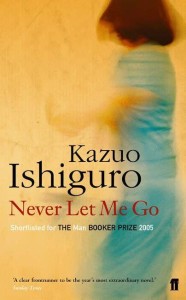 Never Let Me Go
Never Let Me Go
Kazuo Ishiguro
Faber & Faber, 304 pp., £8.99
Paperback
The best fiction grabs you from the opening page, sometimes through a narrative hook, although much more often it’s the voice established by the author that compels me to read on. That was the case with Never Let Me Go, which from the very first paragraph never let me go.
In many ways reminiscent of Margaret Atwood’s The Handmaid’s Tale, which I greatly admire, Ishiguro’s haunting novel is the story of Kathy H, 31, a ‘carer’ reflecting on her time growing up as a student at Hailsham, an exclusive boarding school in rural England that is not all that at first it seems. There are no holidays; no parents ever visit; the teachers are always referred to as ‘guardians’; the curriculum followed is far from standard; and children and adults alike are only ever referred to by their first names.
This is a difficult book to review without spoilers. Suffice it to say, though, that these idyllic surroundings mask a dark secret regarding the destiny of the children. Through the lens of Hailsham, Ishiguro is posing his version of the eternal question: what is the meaning of our existence? Kathy, by her own admission, has led a healthy, fulfilling and purposeful life. She’s pleased to have been given the chance to help others, to have enjoyed close friendships, and to know – as the guardians at Hailsham tell all the students – that she is special.
And yet a dark cloud hangs over the novel: a sense of betrayal and resentment, never explicitly stated or acknowledged but present just below the surface. Ishiguro’s greatest success in Never Let Me Go lies in conveying, in conversational, unhurried and considered prose, exactly that complex and never-fully-resolved web of sentiment.
Ultimately, I feel – and here others may well disagree – that Never Let Me Go doesn’t completely deliver on its early promise. In the final act, as revelations are made, it becomes harder and harder to avoid questioning aspects of the underlying premise. Nevertheless, this is a tender, thought-provoking novel, and one of my favourite books of 2015.
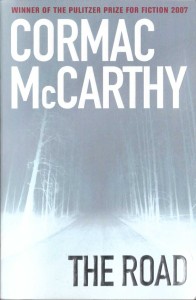 The Road
The Road
Cormac McCarthy
Picador, 320 pp., £8.99
Paperback
With so many books out there and so little spare time in which to enjoy them all, it’s not often that I choose to re-read even a favourite one. The Road – one of the key inspirations behind my own forthcoming fourth novel – is an exception to that rule, and in fact is one of the few books that I have actually enjoyed more on a second reading.
Set in a future America after an unknown cataclysm, an unnamed man and his son journey towards the coast through a burnt landscape, devoid of life save for the cannibals and slavers prowling the roads. Starving, weak and cold, their only hope of survival in this hostile environment is if they stay together.
Related in minimalist prose, their story is all the more powerful for what goes unsaid. The nature of the apocalypse that brought about such devastation is only hinted at obliquely, but in a sense it is unimportant: the past is irrelevant; only the present matters.
While the subject matter may be bleak, however, hope is never lost completely. Yes, there is much greed, cruelty and selfishness in the world envisioned by McCarthy, but in spite of that there is still goodness, love, belief and self-sacrifice. Even in the very worst of times, he argues, the human spirit can never be conquered.
Also recommended:
- Marina Lewycka’s first novel, A Short History of Tractors in Ukrainian, which was shortlisted for the 2005 Orange Prize;
- Moral Disorder, a brilliant and sensitive collection of linked short stories, set over a span of six decades, by Margaret Atwood;
- Claire Lowdon’s critically acclaimed debut novel, Left of the Bang, about the angst, misunderstandings and infidelities of a group of young London-dwellers;
- The Orenda, Joseph Boyden’s novel set in 17th-century Canada, which tells of the arrival of French missionaries and colonists, and their impact upon the native peoples.
Non-fiction
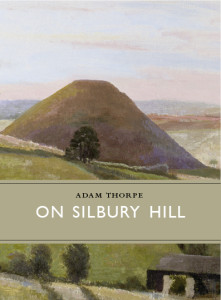 On Silbury Hill
On Silbury Hill
Adam Thorpe
Little Toller, 232 pp., £15.00
Hardcover
Part memoir, part history, part travelogue: Adam Thorpe’s On Silbury Hill defies categorisation. A unique book in so many ways, it charts the many ways in which the eponymous Wiltshire monument – the largest man-made mound in Europe – has been viewed through the centuries.
Taking as a starting-point his first encounters with the Hill while a boarder at the nearby Marlborough College, Thorpe offers a lyrical, highly personal response to the Neolithic landscape in which it is set. As well as reflecting upon what archaeology has had to say about the site, he also delves into rituals and superstitions both ancient and modern in an attempt to unravel something of its meaning and purpose.
As someone who grew up in the vicinity of Silbury and is familiar with the various places described, this book had particular resonance for me. Whether it would have the same appeal to a non-local is hard to say, but it is hard not to be ensnared by Thorpe’s prose, which communicates so effectively his wonder and reverence for this most ancient of British monuments.
It’s worth noting, too, that the book itself is a beautiful object: a diminutive hardcover enriched throughout with photographs and artists’ impressions of the monument and the surrounding landscape. A real gem.
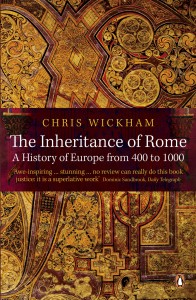 The Inheritance of Rome
The Inheritance of Rome
Chris Wickham
Penguin, 688 pp., £14.99
Paperback
In this sweeping, magisterial history covering six centuries from AD 400 to the end of the first millenium, Chris Wickham sets out to demonstrate why the so-called Dark Ages were anything but. While this period is traditionally characterised as being one of disorder and invasion, it also witnessed – as all early medieval scholars know well – a wide variety of new expressions of creativity and culture.
With its main text running to 560 pages, this is perhaps as concise as it is possible to make a history of Europe that spans such a broad period. As one might expect, it’s dense, but given its geographical and chronological scope – from the fragmentation of the western Roman empire, via the rise of successor kingdoms and the emergence of Islam, to the ‘feudal’ world – this is a book that arguably should be dipped into, chapter by chapter, rather than read continuously.
Some readers may be disappointed by the lack of an overarching narrative to help bind such a wealth of material together, but this runs counter to Wickham’s philosophy, which is to steer clear of imposing such traditional frameworks on this period. Instead, he favours a bottom-up approach: one that assesses the peoples, kingdoms and cultures of the period on their own terms, rather than with reference to what preceded and succeeded them.
Detailed maps and colour plates help provide context to the information presented, while the endnotes and bibliography, which stretch to nearly 60 pages, make this an excellent springboard for those wishing to delve further into the early Middle Ages.
Also recommended:
- The Early Middle Ages, edited by Rosamund McKitterick, which provides a useful counterpoint to Wickham, tackling the same period through themes (politics, economy, religion etc.) rather than dividing it up according to geography;
- The Cambridge Introduction to Anglo-Saxon Literature, Hugh Magennis’s excellent guide to the literary world of Bede, Beowulf and the Anglo-Saxon Chronicle.
- Stephen Aron’s The American West: a Very Short Introduction, exploring the complex history of the region from the precolonial era to the twentieth century;
As 2014 draws to a close, the time has come for me to reveal my favourite books of the year. A few of these are relatively new releases, published within the last twelve months, although some are older.
I’ve divided the list into three sections – fiction, non-fiction and graphical novels – so I
As 2014 draws to a close, the time has come for me to reveal my favourite books of the year. A few of these are relatively new releases, published within the last twelve months, although some are older.
I’ve divided the list into three sections – fiction, non-fiction and graphical novels – so I hope that there’ll be something for everyone. As you might expect, there’s a strong historical slant: the Middle Ages feature particularly strongly, but my choices also cover Roman Britain, Tudor England and the nineteenth century.
If you’ve enjoyed any of the titles below or would like to share your own favourite books of 2014, feel free to join in the discussion on Twitter (@James Aitcheson) or on Facebook.
Fiction
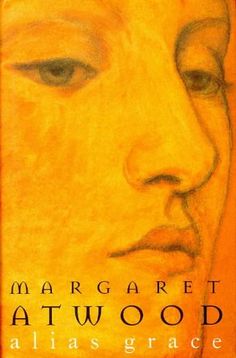 Alias Grace
Alias Grace
Margaret Atwood
Virago, 560 pp., £8.99
Paperback
Margaret Atwood never fails to impress me with the brilliance of her prose and the scope of her ambition. In a year in which I’ve read no fewer than six of her novels, Alias Grace is the one that has most stood out, and which has left the greatest impression on me.
Based on real events that took place in 1840s Canada, the novel centres upon former housemaid Grace Marks, recently convicted of the murder of her employer and his mistress, and sentenced to life imprisonment. But serious doubts remain regarding her guilt, as the earnest young proto-psychiatist Dr Simon Jordan discovers when he comes to investigate her case.
Told partly through Grace’s eyes and partly from Dr Jordan’s perspective, the novel is an absolute tour de force. Atwood’s prose sparkles throughout, her research into the period is impeccable and her characters are nuanced and fully realised. Alias Grace is one of the most absorbing and complete historical novels I’ve read, and one that almost certainly I will be returning to soon.
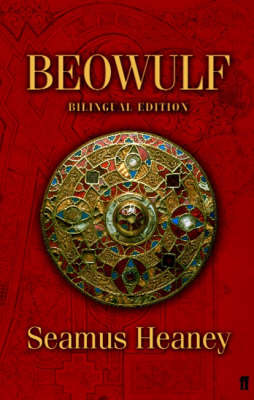 Beowulf
Beowulf
Seamus Heaney (trans.)
Faber & Faber, 256 pp., £12.99
Paperback
As a medieval scholar, it shames me to admit that until this year I’d never read Beowulf, perhaps the most famous text written in the Old English language. The exact date of its composition is unknown, although it is unlikely to be less than 1100 years old and perhaps much older, but the tale of the eponymous hero’s struggles against the monster Grendel and, later, against the dragon remains as compelling now as undoubtedly it was to its Anglo-Saxon audience.
The translation, by the late Seamus Heaney, captures the hero’s vitality and the drama of his deeds, and is all the more absorbing and thrilling when it is read aloud. This bilingual edition uniquely features the original Old English text alongside the translation for easy reference.
Also recommended:
- Gentlemen of the Road, a swashbuckling tale of derring-do in the medieval Khazar Empire, by celebrated author Michael Chabon;
- Atwood’s new collection of short stories, Stone Mattress, which was published this summer;
- CJ Sansom’s latest Shardlake novel, Lamentation, set during the final months of Henry VIII’s reign.
Graphic novels
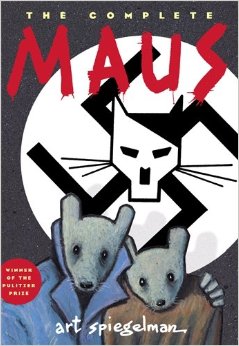 The Complete Maus
The Complete Maus
Art Spiegelman
Penguin, 296 pp., £16.99
Paperback
For the first time my end-of-year list includes a graphic novel, although graphic memoir or biography might be a more appropriate term. Art Spiegelman’s harrowing telling of his father Vladek’s experiences as a survivor of the Holocaust won the Pulitzer Prize when it was published, and deservedly so.
By choosing to depict the subjects of his narrative not as humans but as anthropomorphic animals, Spiegelman takes a bold step, and one that has come in for more than its fair share of criticism. Far from trivialising the events he describes as a cat-and-mouse chase, however, the effect is to allow him to depict subject matter that otherwise might be too horrific for the reader to bear.
Maus is a masterpiece of the genre, a prime example of the power of the graphic novel if ever there was any doubt. Spiegelman’s companion book, MetaMaus, is also well worth reading, for the insights it offers into his early career and how the project came about, his research, the decisions he made in the course of writing the book, and how it affected his relationships not just with his father but with his own children as well.
Non-fiction
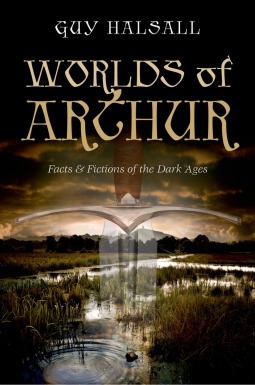 Worlds of Arthur
Worlds of Arthur
Guy Halsall
OUP, 384 pp., £10.99
Paperback
The fifth century, which witnessed some of the most momentous events in British history – the end of Roman rule and the arrival of the Anglo-Saxons – is a period shrouded in mystery. In this hugely important study, Guy Halsall demolishes the pseudo-historical case for the existence of King Arthur and examines the historical and archaeological evidence for what took place in that dark age.
Halsall assumes no prior knowledge, although some of the source analysis may seem impenetrable to the general reader, and so some familiarity with the discussions surrounding the period will undoubtedly help. While not all readers will necessarily agree that the evidence supports his specific conclusions, nevertheless Halsall succeeds in opening up the debate on post-Roman Britain and suggesting some new avenues of enquiry. Cogently argued and well illustrated throughout, this is an excellent piece of scholarship – history writing at its best.
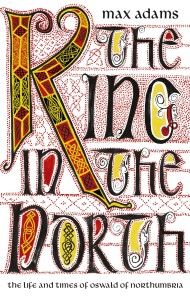 The King in the North
The King in the North
Max Adams
Head of Zeus, 464 pp., £9.99
Paperback
The early Anglo-Saxon period is one largely unknown nowadays except to specialists. In this accessible and compelling history, Max Adams rescues from obscurity one of the most powerful rulers of that age: King Oswald of Northumbria (r. 634-42), who according to the historian Bede “brought under his dominion all the nations and provinces of Britain”, and whose reign witnessed the establishment of Christianity and the foundation of the famous monastery at Lindisfarne.
Less a biography of a single man than it is a study of a dynasty, The King in the North depicts a ruthless and volatile world in which Britons fought Anglo-Saxons, pagans fought Christians, and fortunes of entire kingdoms could be overtuned at a single sword’s blow. For a more in-depth discussion, take a look at the fuller review I penned earlier in the year.
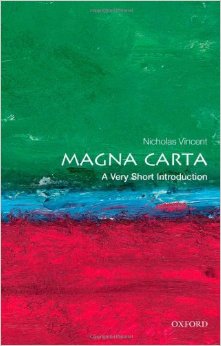 Magna Carta: a Very Short Introduction
Magna Carta: a Very Short Introduction
Nicholas Vicent
OUP, 152 pp., £7.99
Paperback
2015 will mark the 800th anniversary of Magna Carta, the great charter between King John and his barons that sought to restrict and regulate royal authority. The document casts a long shadow: even today, it’s often held up as one of the cornerstones of modern democracy, not just in Britain but in the United States as well.
Nicholas Vincent examines the history and context of Magna Carta, including how it was reinterpreted and reframed in the generations following 1215, and asks whether the mythic status that it has acquired over the centuries is justified. Concise and yet comprehensive, it includes a translation of the full text of the original issue. An excellent introduction to the subject.
Also recommended:
- Jared Diamond’s latest book The World Until Yesterday, in which he asks whether as wealthy Westerners we can learn any lessons from traditional, pre-industrial, stateless societies;
- The Middle Ages: a Very Short Introduction, Miri Rubin’s new addition to the long-running series from Oxford University Press, which offers a broad overview of medieval Europe and its society and culture.
- Under Another Sky, part travelogue and part work of history, in which classicist and journalist Charlotte Higgins explores the legacy of the Romans in Britain.
A prince-in-exile makes his triumphant return from obscurity, slaying the tyrant who was ravaging his homeland and reclaiming the throne that, half a lifetime earlier, was stolen from him, before establishing himself as one of the pre-eminent kings of his age and ushering in a golden age for his people. The story of King Oswald
A prince-in-exile makes his triumphant return from obscurity, slaying the tyrant who was ravaging his homeland and reclaiming the throne that, half a lifetime earlier, was stolen from him, before establishing himself as one of the pre-eminent kings of his age and ushering in a golden age for his people. The story of King Oswald of Northumbria (reigned 634-42) is a remarkable one – indeed the stuff of legend – and yet nowadays his achievements have largely been forgotten by most except Anglo-Saxon specialists.

The King in the North
Max Adams • 448 pp. • Head of Zeus
Hardback • £25.00
In keeping with the book’s subtitle, “the life and times of Oswald of Northumbria”, Adams does not examine his subject’s career in isolation, but also explores the array of societies and cultures – religious and secular – that inhabited seventh-century Britain, and so places his reign in its historical context. While Oswald, his achievements and his afterlife as the focus of a saintly cult form the backbone of the book, a significant amount of attention is given also to the career of his predecessor Edwin (616-32) as well as to the long reign of his successor, his brother Oswiu (642-70). Indeed The King in the North is less a biography of a single man than it is a study of a dynasty, and of the leading role played by Northumbria in the politics, religion and culture of seventh-century Britain. This was a land divided: a land of seemingly perpetual conflict between rival families, Anglo-Saxons and Britons, new and old customs, pagans and Christians, and even between different branches of the Church: the Irish, the British and the Roman traditions.
Oswald’s reign as king was relatively short – only eight years – and yet his impact in that time was decisive in forging the Northumbrian kingdom. After ousting a Welsh army from his ancestral homelands in order to claim his crown, he proceeded first to unite the ancient provinces of Bernicia and Deira under one rule and, later, to win a great victory over a coalition of forces drawn from the southern Anglo-Saxon kingdoms, which in the following century led the historian Bede to assert that he had “brought under his dominion all the nations and provinces of Britain.”
Exactly how much can and should be read into these words isn’t clear. It would perhaps have been useful to have seen a deeper interrogation of Bede’s statement, which Adams accepts at more or less face value. There’s no doubt that both Oswald and Oswiu were among the most powerful rulers of their age, and widely respected throughout these isles. What’s more questionable is the extent to which they can be justifiably said to have been overlords over all the kingdoms of Britain, south as well as north of the Humber. What might this overlordship have entailed? How might it have been achieved and exercised in practice? What was the exact extent of their authority, and was it was uniform throughout the territories that lay beyond their kingdom’s borders? Given that their power base was centred upon Bamburgh, it is hard to imagine how they could have exercised much influence over Wessex or Kent, for example.
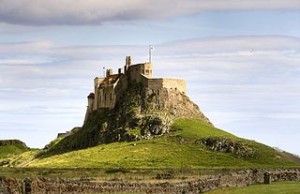
Lindisfarne Castle on Holy Island. The castle was built in 1550, re-using stone from the Norman priory. (Photo credit: Matthew Hunt. Reproduced under the Creative Commons Attribution 2.0 Generic licence.)
Around these events Adams expertly weaves his account. If the title of The King in the North is intended as a nod towards George R. R. Martin’s A Song of Ice and Fire series, then the comparison between the world of Oswald and that of Eddard Stark is an apt one. The political landscape of seventh-century Britain was a ruthless and volatile one, in which rival dynasties pursued vicious bloodfeuds and in which fortunes of entire kingdoms could be overtuned at a single sword’s blow. Elaborately constructed networks of alliances and tribute rarely outlived the rulers at their head. Power rested in the hands of the most military successful: those who were able to attract the largest warbands, and who were able to prove their throne-worthiness through victory in battle.
The great triumph of Adams’ study is in bringing all this to life. Impeccably researched, compellingly written and accessible to the general reader as well as to the specialist scholar, The King in the North vividly reconstructs the world that Oswald not only inhabited but also helped to shape.
Last week I posted Part One of my list of top reads of 2013. Following on from The Sea Road, The Spy Who Came in from the Cold and The Face of Battle, here’s another selection of books to keep you entertained over Christmas and into the
Last week I posted Part One of my list of top reads of 2013. Following on from The Sea Road, The Spy Who Came in from the Cold and The Face of Battle, here’s another selection of books to keep you entertained over Christmas and into the New Year. This time round, I thought I’d turn the spotlight on some of my favourite new releases of the year.
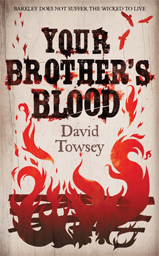 Your Brother’s Blood
Your Brother’s Blood
David Towsey
Jo Fletcher, 336 pp., £19.99
Hardcover
This accomplished debut novel – the first in a trilogy – doesn’t fit easily into any one particular genre. Best described as a post-apocalyptic zombie Western survival/pursuit thriller, it’s also an emotive tale of humanity and sacrifice in a world riven by fear and prejudice. Set many centuries into the future, when society has regressed to a pre-industrial technological level, it tells the story of soldier Thomas McDermott, killed in battle but now back from the dead as one of the Walkin’. Partly burnt and horribly disfigured, but nevertheless in full possession of his mental faculties, all he wants is to return to his hometown of Barkley and to be reunited with his wife and daughter. Therein lies the problem, however, for in Barkley the Walkin’ are seen as anathema, tainted ones and servants of the devil. By returning home, Thomas is placing not just himself in danger but his family as well. A lecturer in Creative Writing at Aberystwyth University, Towsey is a master of his craft; lyrical prose and compelling characters combine here to create a novel with real warmth and heart. I eagerly look forward to the sequel, due to be published in 2014.
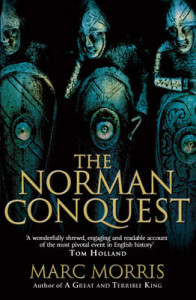 The Norman Conquest
The Norman Conquest
Marc Morris
Windmill, 464 pp., £8.99
Paperback
First published in hardcover in 2012, Marc Morris’s new history of the Norman Conquest came out in paperback this year and without a doubt stands among my favourite non-fiction reads of the last twelve months. Accessible to the non-specialist and engagingly written, his account of these critical years is underpinned by rigorous source analysis. Wherever the evidence of different texts comes into conflict and the truth of the matter is uncertain – as is often the case when dealing with material from this period – Morris is careful to present both versions of events. This even-handedness extends towards the Normans and the English themselves; while there is a tendency nowadays for us in the modern age to identify and sympathise with the Anglo-Saxons against their foreign oppressors, Morris encourages us not to colour our judgement of past events by taking sides. Beginning his study in the early eleventh century and continuing up to the end of the Conqueror’s life in 1087 (with a postscript extending into the twelfth century), he sets the events of 1066 in their proper context. Throughout the text he combines a historian’s scholarship with a storyteller’s flair and narrative drive, and the result is an absorbing and up-to-date study of the subject. If you’ve already finished Knights of the Hawk and are looking to discover more about the period and the Norman impact upon England, this will serve as an excellent companion. Highly recommended.
With the year drawing to a close, it’s time for an annual round-up of my favourite books of the last 12 months. As ever, my picks include a mixture of fiction and non-fiction, new and not-so-new releases – with any luck, something for everyone. So without further ado, here’s the first instalment of my top
With the year drawing to a close, it’s time for an annual round-up of my favourite books of the last 12 months. As ever, my picks include a mixture of fiction and non-fiction, new and not-so-new releases – with any luck, something for everyone. So without further ado, here’s the first instalment of my top reads of 2013.
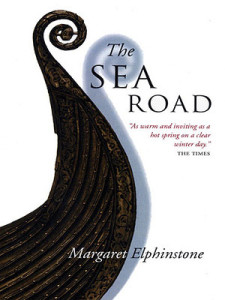 The Sea Road
The Sea Road
Margaret Elphinstone
Canongate, 256 pp., £9.99
Paperback
The slenderness of this novel, first published in 2000, belies its richness and its depth. Set in the Norse colonies of the North Atlantic around the year 1000, and taking the sagas as its inspiration, The Sea Road is the story of Gudrid, an Icelandic woman living on the edge of the known world, who was among the first travellers to and colonists of Vinland, in what is now often identified as Newfoundland. Lyrical and absorbing, told with real insight into the hardships of life in these difficult landscapes, as well great sensitivity towards the mores of the age, The Sea Road represents historical fiction at its finest, and is my pick of the genre this year.
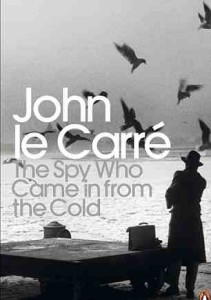 The Spy Who Came in from the Cold
The Spy Who Came in from the Cold
John le Carré
Penguin Classics, 272 pp., £8.99
Paperback
First published 50 years ago, John le Carré’s third novel is now rightly regarded as a classic of the spy genre, and remains just as readable and as relevant today. A taut psychological thriller full of deception, double-bluff and brilliantly conceived twists, it also highlights some of the difficult choices and moral compromises that often have to be made by those involved in the world of espionage. In Le Carré’s vision, there is no room for idealism; the secret services are seen often to betray the very principles they purport to defend, while the spy himself is presented as a solitary, cynical and unromantic figure, the victim of the very system he has served so loyally and for so long. This darkly compelling, fast-paced novel is an excellent introduction to the works of Le Carré.
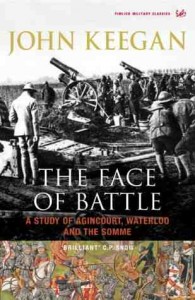 The Face of Battle
The Face of Battle
John Keegan
Pimlico, 352 pp., £11.99
Paperback
In The Face of Battle, originally published in 1976, historian John Keegan examines the various ways in which warfare has evolved over five centuries of European history. Focussing on the battles of Agincourt (1415), Waterloo (1815) and the Somme (1916), he explores not just the physical, but also the psychological and emotional experience of the front-line soldier, analysing and comparing what motivated and inspired men in all three ages to take up arms, and how they were able to withstand the pressures and horrors of combat, whether ranged or hand-to-hand. Although perhaps not quite as revolutionary nowadays as when it first appeared, it nevertheless remains an eye-opening and informative read, and is my non-fiction choice of 2013. For a fuller review, see this blog entry, which I posted earlier this year.
Part Two of my picks of 2013 will follow soon…

